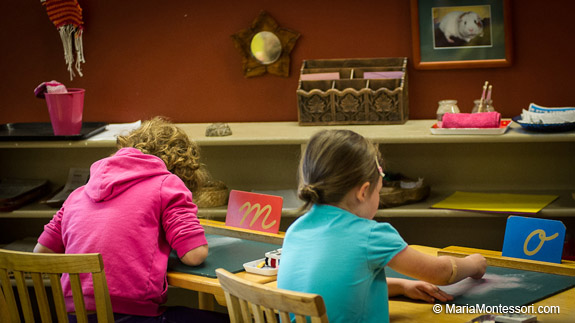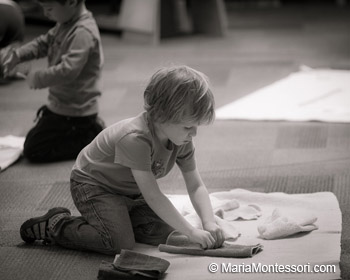

On a recent morning, I had two sets of prospective parents scheduled to observe in the same primary class (mixed-age of 3-, 4- and 5-year-olds), a half-hour apart. One of the more satisfying parts of my job is to meet with prospective parents after their first observation in a Montessori school. I usually start the conversation by asking, “What did you see in the classroom? Did anything surprise you? What were your impressions?”
On this particular morning I was struck by the complete contrast in the impressions of the two couples, for while the first said it was too structured, the second said that it wasn’t structured enough! How could two couples have such different impressions of the same classroom on the same day? I needed clarification, so I asked each couple some questions to try to better understand what they meant by structure.
To the first couple, I asked, “Was there a teacher standing over the children making them all do the same thing activity at the same time?” “Oh, no,” the couple responded. “Well then, were the children making individual choices of activity,” I continued, “and did they seem to be engaged and enjoying the activities they chose?” “Oh yes,” they assured me, “but it was too calm and quiet.” And so I had an opportunity to remind them that when people, whether children or adults, are engaged in activities that satisfy their inner need to grow and self-actualize, they don’t run around and shriek and giggle. Instead, they display a demeanor of self-assurance, satisfaction, and calm enjoyment, just like they saw in the Montessori classroom. Upon reflection, they conceded that I had a point and that what they reacted to as too much structure was actually just the right amount as it freed children to pursue their own interests and find engagement and satisfaction. I could tell that they left the school pondering a new insight into the nature of childhood, and were impressed despite themselves.
Then it was the second couple’s turn. When they made the comment, “There doesn’t seem to be any structure!” I had to smile. I shared the comment of the couple before them and asked, “Were there children running around shrieking and giggling, fighting and taking things from one another, crying or misbehaving?” “Oh no,” they assured me, “but they weren’t all doing the same activity. In fact, there were 24 children doing 24 different things! It took us a few minutes to even find the teacher!” And so I described to them the underlying, nearly invisible structure of a Montessori classroom that combines freedom and responsibility, and calls forth self-direction, self-discipline, and cooperation from these little beings. They too conceded that I had a point and went away equally thoughtful and impressed.
This is not an unusual reaction and it always makes me smile because it occurs to me that as long as we continue to get both kinds of comments — to some parents it looks like too much structure and to others not enough – then we must be doing something very, very right indeed.